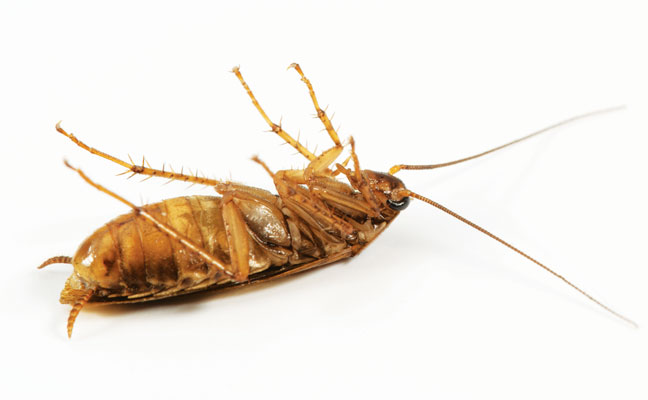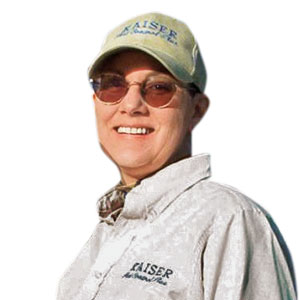
Photo: courtesy of, and copyrighted by, Gene White, pmimages@earthlink.net
Although choosing an effective cockroach control product is critical, an initial thorough inspection will help put pest management professionals (PMPs) on the path to success.
“Thorough inspections and targeted applications of pesticide eliminate cockroach problems,” says Cornett Martin, field operations manager for Ecolab, St. Paul, Minn. “Most cockroach issues should be approached with a 90/10 rule: 90 percent inspection, 10 percent treatment. There definitely are outliers to this rule, but this approach has helped me shape one of the best cockroach elimination teams in Florida.”
Customers can help steer your inspections, he adds, if you ask them where and when they are seeing cockroach activity. When you do find cockroaches, identify the species.
“For successful cockroach control, a thorough inspection of the structure is very important,” says Technical Director Sam Makhani, GreenMind Pest Consulting, Chino Hills, Calif. “An accurate identification of the cockroach species is needed to be able to effectively treat this pest.”
EFFECTIVE COMMUNICATION

Kathleen Kaiser
PMPs should communicate with their customers to help them understand the entire cockroach control process, says Kathleen Kaiser, president of Kaiser Pest Control Plus in Wichita, Kan. This includes the results they should expect and the amount of time needed for eradication. “Don’t over promise the results you think are possible,” she says.
In addition, speaking with customers often reveals the extent of their cockroach problem. Daryl Hansen is a field manager for Ram Exterminators in Shawnee, Kan., and says before treatment, he always asks customers to help him out by keeping their places clean so he can do his job better. He then waits for them to commit to his request.
“Instead of calling them out for having a messy place, I put it on me and say, ‘I really could use your help to do the best job I can. Would you mind making sure trash is taken out and keeping your kitchen clean?’ It sure helps get the job done quicker,” he says.

Daryl Hansen
Customers with sanitation issues may be overwhelmed, embarrassed or in denial. “Fortunately, most customers really want to help,” he adds. “Sometimes it is not always about exclusion, but inclusion.”
Sharon Molter, owner of Protech Maintenance in Indianapolis, Ind., suggests documenting everything and insisting on repairs, paint, or proper sanitation.
“I will walk away from some jobs if sanitation and cooperation are not present,” she adds. “Burnout will negate your results if technicians cannot be successful on the job.”
Molter advises talking with customers to determine when the infestation began. Find out whether an attempt was made to treat for cockroaches, and if so, whether it was performed by an in-house facilities worker, a pest control company technician, or the tenant.
“Knowing who applied the treatment guides you to what was applied, so a treatment plan can be more effectively determined,” she explains. “Then, inspect the infested area thoroughly to determine what should be used to eliminate the problem, and gauge what the follow-up treatments might entail.”
Once you outline a treatment plan, share it with everyone who is involved or affected to ensure your customer’s expectations are considered, and your treatment expectations and requirements
are understood.
COMPREHENSIVE TRAINING

Cornett Martin
Another key to success is ensuring technicians do not take on too many service calls in a day. They need a sufficient amount of time to conduct inspections and perform treatments, says Makhani.
He recommends encouraging technicians to undergo advanced training. “The pest control market is very competitive, so do not compromise on service or enter into price wars,” Makhani advises. “Instead, promote that you use trained technicians who provide high-quality service.”
Then, require technicians to undergo comprehensive cockroach control training. Makhani says as a regional manager and technical director, he spent a few days or nights in the field with technicians to provide hands-on training, and followed up on any improvements each person needed. He also created a cockroach service protocol that technicians are required to follow line by line.
APPROPRIATE TOOLS
Certainly, training must encompass the proper selection and use of the tools required for cockroach control. New technology and modern pesticide formulations are worth exploring. “All pest problems are different, and technicians need to deal with them accordingly,” Makhani adds.

Sam Makhani
“The correct pesticide with a combination of integrated pest management [or IPM] methods will give you the best result, and that’s what your clients are looking for,” Makhani says. Rotating your pesticides and control methods will bring the desired result with less effort or cost, he adds.
Not all pesticide failure is caused by pest resistance, he points out: “Ensure you identified the pest accurately, used the correct pesticide with the correct dosage, and applied the pesticide correctly and in the correct amount.”
Finding the source of the infestation should enable you to determine the size of the problem, and whether you are dealing with a new infestation or an ongoing issue, Makhani says. Look for conducive conditions, but do not overlook wall voids or anything that could lead to chronic cockroach infestations in residential or commercial buildings if left untreated.
“Exclusion will result in an account that is far less hospitable to pests so seal all voids, gaps, holes, crevices, and all harborage areas,” he adds. “Be sure to address sanitation and maintenance deficiencies, too.”
To eradicate pests, Makhani recommends selecting a long-term pest management strategy. “Do not rely entirely on the use of pesticides; instead, use a combination of control methods,” he says. Although the selection of the correct pesticide formulation is critical, so is communicating with and educating your customers.
“Prevention, follow-up, and the adjustment of an IPM plan with a long-term solution will return the desired control results,” he says. “Keeping a pest from becoming a problem is a key.”
Ram Exterminators’ Hansen says cockroach control depends on sanitation, cleanliness, and lack-of-moisture issues. “Communicating to customers the importance of these key factors is critical to success,” he concludes.
Read more: Living with a large infestation
Cockroach infestation is a Knowledgeable article. I will be really appreciated the team.